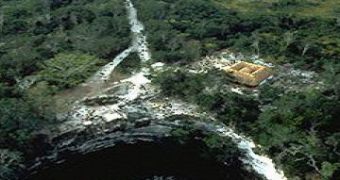There were three great civilizations in America before its discovery by the Europeans: Aztec, Inca and Maya; but Maya of southern Mexico and Guatemala was by far the most advanced, culturally and artistically. The Maya built complex temples and palaces before the arrival of the Spaniards.
The most important Maya cities were: Tikal, Copan, Coba, Chichen Itza, Palenque, Quirigua, and Uxmal. Many cities were pilgrimage religious centers, where people from all the corners of the region made their prayers to the gods; people went to Chichen Itza (in the Yucatan peninsula) in order to pray for rainfall, and human sacrifices were made into the famous cenotes (enormous natural wells - water filled sinkhole caves - shaped in limestone), to the rain god Chaac. The Mayan priests of Chichen Itza sacrificed children to the gods, for rain and fertile fields, by throwing them into the cenotes.
Scientists believed that young female virgins were sacrificed, as the remains, aged from around 850 AD until the Spanish colonization, often had jade jewelry. But a new research shows that Mayans actually sacrificed boys and young men. Mayans used the water of the cenotes, believed to be the entrance gate to the underworld.
When archaeologist Guillermo de Anda, from the University of Yucatan, analyzed bones coming from 127 bodies found at the bottom of one cenote of Chichen Itza, he discovered that more than 80% were boys aged 3 to 11. He scuba dived in order to search for Mayan jewels and bones.
"The other 20% were mostly adult men. Children were often thrown alive to their watery graves to please the Mayan rain god Chaac. Some of the children were ritually skinned or dismembered before being offered to the gods. It was thought that the gods preferred small things and especially the rain god had four helpers that were represented as tiny people. So the children were offered as a way to directly communicate with Chaac," said de Anda.
"It is difficult to determine the sex of skeletons before they are fully matured," said de Anda, pointing that the Mayan mythology suggests that the young victims were in fact boys.

 14 DAY TRIAL //
14 DAY TRIAL //